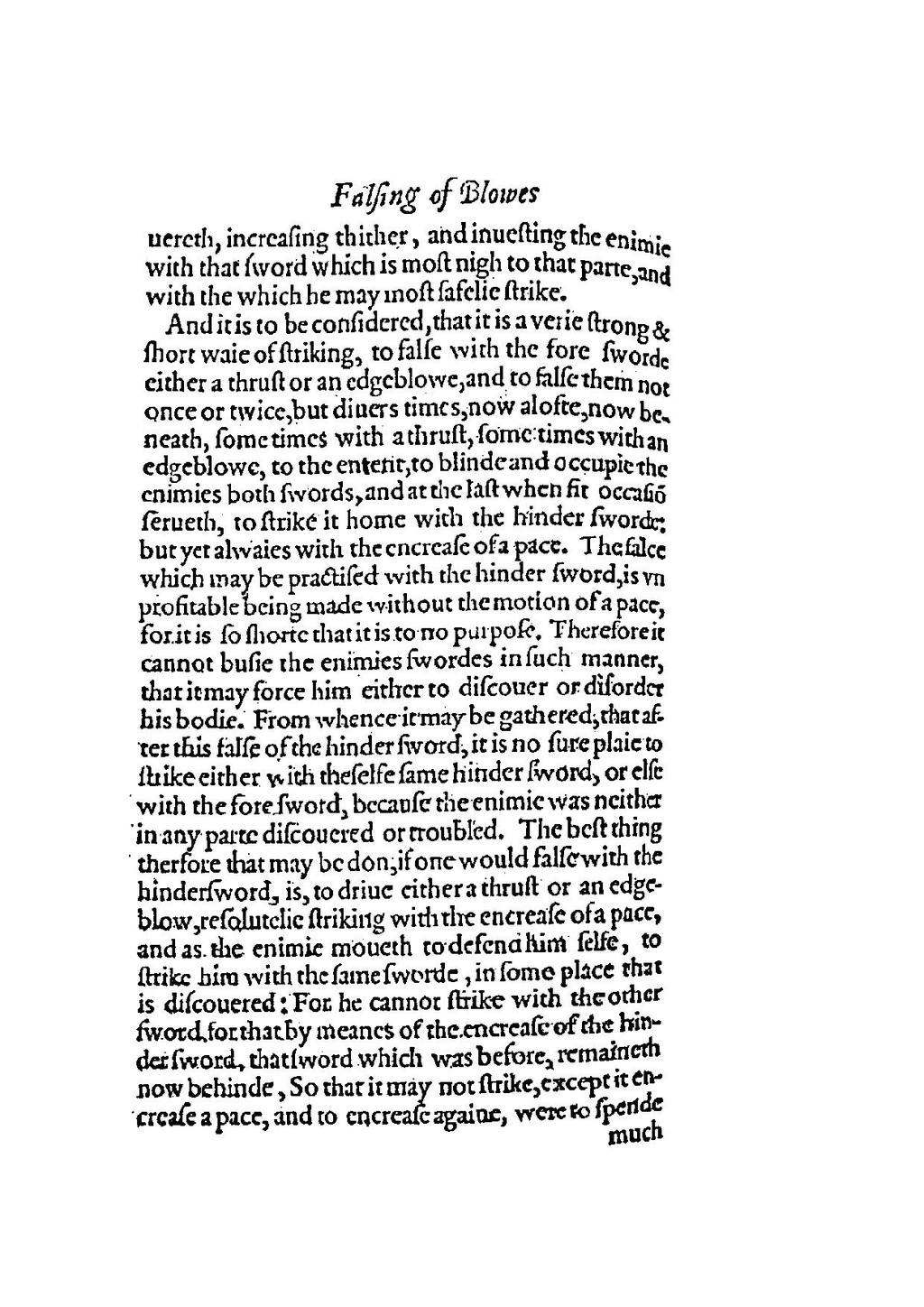uereth, increasing thither, and inuesting the enimie with that sword which is most nigh to that parte, and with the which he may most safelie strike.
And it is to be considered, that it is a verie strong & short waie of striking, to false with the fore sworde either a thrust or an edgeblowe, and to false them not once or twice, but diuers times, now alofte, now beneath, some times with a thrust, some times with an edgeblowe, to the entent, to blinde and occupie the enimies both swords, and at the last when fit occasiō serueth, to strike it home with the hinder sworde: but yet alwaies with the encrease of a pace. The falce which may be practised with the hinder sword, is vn profitable being made without the motion of a pace, for it is so shorte that it is to no purpose. Therefore it cannot busie the enimies swordes in such manner, that it may force him either to discouer or disorder his bodie. From whence it may be gathered, that after this false of the hinder sword, it is no sure plaie to strike either with theselfe same hinder sword, or else with the fore sword; because the enimie was neither in any parte discouered or troubled. The best thing therfore that may be don, if one would false with the hindersword, is, to driue either a thrust or an edgeblow, resolutelie striking with the encrease of a pace, and as the enimie moueth to defend him selfe, to strike him with the same sworde, in some place that is discouered: For he cannot strike with the other sword for that by meanes of the encrease of the hinder sword, that sword which was before, remaineth now behinde, So that it may not strike, except it encrease a pace, and to encrease againe, were to spende

